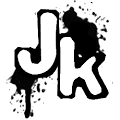|
- Serpent SRX2 - Jared Kirkwood - Build - Oct. 2013 -
Needed Tools
The SRX2 uses a few different tools not normally found in a 1/10th off-road tool box. Make sure you pick up 4.5mm nut driver like the Hudy Socket Driver 4.5mm (HUD170045) which is used for the camber links' pivot balls and mounting the shocks. In addition, the camber links are made from a very strong spring steel material, thus they are smaller to reduce weight. A 3mm turnbuckle wrench is needed for easy assembly and adjustment. Again, Hudy has a tool for that which is the Hudy Spring Steel Turnbuckle Wrench (3mm) (HUD181030).
You will still need various other tools but most racers will have everything else that's needed.
Steering Rack
The Serpent Sypder SRX2 build begins with the steering bell cranks which rides on 4 bearings.
Make sure you use locktight on all the screws that are screwed into the metal bearing posts. Failing to do so will result into a DNF as the screws will back out.

Completed steering assembly.

Front Arms & Sprindles
The front arms was a bit tight on the few kits I've built. I sanded the arms slightly at the pivot point so that the spindle flopped easily. Be careful not to remove too much.
Front Spindles
The front spindles have caster inserts. The default setup is to use the zero degree insert which will give you 25 degrees of overall caster. If you want more or less caster you can use the included inserts. Pay careful attention to the direction of these inserts as you want to use the same setting on both left and right spindles. The picture right shows the spindles with the the 2.5 degree option installed.
Camber Links
Put a little grease on the camber link threads before threading the ball ends on. This will make later adjustment much easier.
I added a .1mm shim to the axle to take out any play.

Careful on the direction of the caster insert. Car has 0, 2.5 & 5 degree inserts.

Sanded the arms very slightly to allow the spindle carriers to move freely.

When building the links. Use a bit of grease on the threads to make adjustments easier.

The front assembly is complete.

Rear Pivot and Eccentrics
The aluminum rear FR pivot can be installed in two directions. Make sure you install it where the eccentric inserts are closest to the chassis. Also the manual suggests you use the #2 eccentric in both the FR and RR pivot mount. However testing has shown a better starting position for the rear anti-squat and toe-in is 1-UP FR and 2-DOWN RR as indicated on this setup sheet.
Rear Arms & Rear Hubs
Like the front arms the rear hubs was a little tight for my liking. However besides sanding the arms I found that 1mm aluminum shims offered the freeness I was after. Like the front spindles the rear hubs use inserts. These inserts can adjust toe-in or toe-out depending on the insert used.
The rear outboard toe can be adjusted as well via inserts. 0, .5, 1 & 2 degree.

I like using aluminum shims to space rear hubs vs the included plastic.

The Sypder SXR2's rear inner pivot has multiple possibilities for adjusting roll center and toe angles.

Transmission
The diff spring on my kit had a small burr which prevented it from inserting easily into the out-drive. I removed this burr with a sanding drum on a Dremel tool. Others have reported a similar issue and still others no issue. If the spring doesn't insert easily into the outdrive you may need bevel the edges a bit on the spring. Otherwise the transmission built very well. Pay attention to which inserts you use for the diff height adjustment and follow the directions. At the moment, most team members are preferring the diff height low.
The diff is fairly standard but uses larger diff balls.

Diff height can be adjusted using the included transmission inserts for the diff and idler gear.

The transmission was an easy build.


All that's left is shocks, body and electronics.
Shocks
My shocks built up very well. A little tight around seal pack but after oiled well they feel good. Sometimes a molded piston will have a small bur or high spot on it preventing good fluid movement inside the shock. If you find this to be true simply remove the high spot from the piston a bit of high grit sand paper.

Shocks complete. Nice and smooth.

Determining the weight bias for electronic and weight placement.

Finished wiring the car this evening. Should start on the body tomorrow.

Finished the body up.

Source:
J. Kirkwood

|
